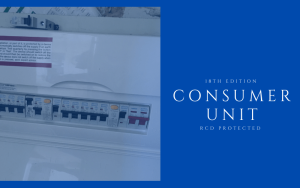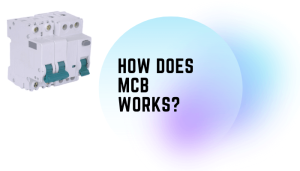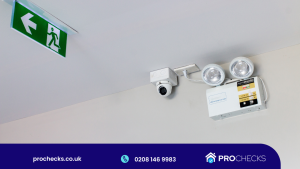The idea behind installing emergency lighting is to provide lighting in case of unexpected situations. Mostly, a cut in the main power supply. Fire hazards and loss of power of the main supply, all this situation triggers your premises emergency lights to start.
Emergency lighting is designed to go run automatically in case of a power cut, fire, or failure in the lighting system. Different situations mean different types and different purposes.
Whereas emergency lights were made to provide lights in case of losing power, some types are designed to help people escape from the risk.
In a situation of a lighting system failure, emergency lighting systems help normal activities to continue. For example, hospitals and companies.
Emergency lighting regulations: what do they say?
According to Regulatory reform” fire safety” order 2005, all businesses and companies in Uk are legally required to install an emergency lighting system. If a business chooses to ignore and not obey the law, the authorities will take legal action against the responsible people.
Section BS 1838 specifies that all businesses must have escaping lighting and standby lighting. For the escaping lighting, it must be near all exit points.
Emergency lighting guideline part BS 5266, specifies that emergency lights must install on floor level and panic areas
Emergency lighting system
Emergency lighting systems are designed and developed by following the FRA, it helps to show the path of escaping in case of fire hazards. Circuit failure or power cut also are included, the system involves important, and necessary requirements.
The first requirement indicates that there should be a complete and effective emergency lights plan and design. Businesses must position luminaries including; walls, ceilings, mounted lights, and signs.
The system must have a permanent installation of all filtering. Lastly, an efficient emergency lights system will last only; if businesses make periodic tests, inspections, and maintenance.
Emergency lighting and the responsible people
The term responsible people refer to landlords. The regulation part BS 5266-1 says that all landlords in the UK must prove their FRA emergency plan efficiently including working and test emergency l escaping lights.
This section of the regulation helps the landlord to demonstrate their ability to keep their tenet life safe and provide the highest level of safety.
Different types of emergency lights
Escaping Lights
Escaping route lights are considered vital for the people’s safety, this type of lighting is considered part of the FRA, fire assessment system. Escaping lights helps by providing luminaire and vision to people in case of fire and circuit cut.
Buildings and businesses that want to ensure and identify a clear safety route for the occupants must install escaping lights.
Standby Lights
The law doesn’t require it to have standby lighting systems. Typically this type of lighting starts automatically when the power goes off. Stand by light hemp to ensure activities can proceed in case of a cut in the main power supply.
Opera area Lights
Open area emergency lighting or simply panic area lights, the same as escaping route lights, help occupants to find the escaping way in case of fire or panic.
High-risk Lights
Industries and businesses of high risk need to have high-risk area task lights. This type of lighting helps by saving the worker’s lives by preventing dangerous scenarios or fatalities.
Note: all of the escaping route lights, opera lights, and high-risk area task lights are considered as the three aspects of emergency escaping lights.
Mode of operation
For the mode of operation of emergency lights, there are three phases to consider deciding:
- Maintained emergency luminaire: Emergency lighting regulation part BS- 2566 contains a list of places that should contain maintained emergency luminaires. Places like cinemas, theatres, night schools, museums, stations, and other public places. It’s necessary to keep emergency lights in those places running all the time to show escape and excite root.
- Non-maintained luminaire: all emergency luminaires that automatically runs if the power supply fails consider non maintained emergency luminaires.
- Switchable emergency luminaire: Or combined emergency luminaires, they normally contain at least two emergency lamps. Usually, one or two of the lamps are connected to an emergency power supplier and the remaining to the main power supplier. If the main supplier goes OFF, the emergency supply lamps will provide lighting.
Facilities
Luminaire with test devices Luminaire Including test devices comes with a self-test module.
Luminaire with a remote test device: luminaires that come with a remote test device can be tested remotely by the central unit
Inhibiting mode luminaire: inhibiting mode contains an inhibitor switch that works as a control mode or emergency safety switch. It helps the emergency lighting batteries from discharging by inhibiting them from operation if the premises are unoccupied.
High-risk task luminaire: The regulation indicates that luminaires of high-risk operation areas shouldn’t be less than 10% of the recommended maintained luminaires. This will provide a good working environment as long as it’s subject to the minimum luminaire 15 lux rate.
Duration
Going through the regulation of the same part BS5266, you will find detailed information on the necessary steps of an emergency lighting evacuation. The recommended duration of full premises evacuation should be in 1 hour. During that time, the building must be unoccupied, and the occupants must evacuate.
The law includes that in case of a lighting failure or fire emergency lighting, one must stand for exactly one 1 hour for a total evacuation till the power is restored.
If the building is not yet evacuated in 1 hour, then the minimum duration of an emergency evacuation is up to 3 hours. Providing the necessary time to make the premises unoccupied and restoring the total capacity of the lighting system.
Emergency lights classification
The new emergency lighting system is described by a formula of letters and numbers
The classification code formula will be like this
letter/number/letter/number
The first letter represents the lighting type
X: Self-contained
Y: Central battery
The number that follows refers to the mode of operation
0: non maintained
1: maintained
2: combine non-maintained
3: combined maintained
The third letter code referees to the facilities
A: including test device
B: including remote test devices
C: inhibiting mode
D: high-risk task luminaire
Lastly, lighting duration (minutes)
You will find one number of the following 10, 60, 120, 180
Examples of reading emergency lighting classification code
[x][0][A][120] – Self contained-non maintained -including test device- 2 hours duration [y][1][C][180] – Central battery- maintained- including inhibiting mode- 3 hours durationLuminaires and emergency signs
The FRA, emergency lighting regulation, and the UK government declared that luminaires and emergency signs including fire signs must cover the following areas
All exit doors, escape routes, and each final exit point must contain an emergency light or sign or at least a sufficient emergency sign.
Areas that are larger than 60m² and stairways, fire equipment, and doorways. External escaping routes and floor levels all must have luminaires and emergency signs.
Toilets and bathrooms must contain fire and emergency signs.
A final note about luminaires and emergency signs, it’s not necessary to provide emergency lighting for all places. Some places just require the installation of visible and sufficient emergency signs.
How much light to eliminate
Deciding how much light to eliminate largely depends on the use of your emergency lights. For more information about how many lights your premise requires you can get back to part BS- 5266-1.
BS 5266-1 has detailed information about what areas you should install your emergency lights and how many lights you must eliminate. However, as mentioned before, you decide how many lights you need to eliminate based on your premises size, its exit points, and its occupants.
Commissioning certificate
Business and buildings owners are legally required to have an installation emergency lighting certificate from a qualified electrician. A satisfactory lighting certificate tells that your emergency lighting systems are up to the BS5266 standards and your building is safe to operate.
The law in the UK recommends having periodic emergency lighting tests. It can be weekly tests, 3-month tests up to one-year tests. Emergency lights tests help ensure that you have sufficient and efficient lights and signs in events of evacuation.
Maintenance
The Uk law and the FRA regulation states that the responsible people for emergency evacuation must carry out periodic tests. Along with emergency lighting tests, the lighting equipment must maintain and test regionally and that to provide the highest level of safety and precaution.
Moreover, employees and occupants must be aware of the exit pint and the current evacuation plan.










